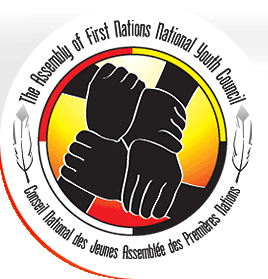 February 23, 2009 - Assembly of First Nations National (AFN) Chief Phil Fontaine said today that he hopes the Government of Canada's recent announcement to commit more than $472,000 in federal funds over two years to tobacco cessation programs for Inuit youth will lead to a renewed commitment to restore similar projects for First Nations youth.
February 23, 2009 - Assembly of First Nations National (AFN) Chief Phil Fontaine said today that he hopes the Government of Canada's recent announcement to commit more than $472,000 in federal funds over two years to tobacco cessation programs for Inuit youth will lead to a renewed commitment to restore similar projects for First Nations youth.
The Assembly of First Nations is the national organization representing First Nations citizens in Canada. First Nations (term has replaced the term "Indian", except for historical reference) peoples' refers to the Indian people in Canada.
Aboriginal Peoples - the descendants of the original inhabitants of North America. The Canadian Constitution recognizes three groups of Aboriginal people -- Indians, Métis and Inuit. These are three separate people with unique heritages, languages, cultural practices and spiritual beliefs. The term "First Nation" has now replaced the term "Indian", except for historical reference. The Inuit reside in Northern Canada - above the tree line in the Northwest Territories, Nunavat, and in Northern Quebec and Labrador. (First Nation, University of Manitoba, Manitoba Centre for Health Policy)
Since the First Nations and Inuit Tobacco Control Strategy (FNITCS) was cancelled in October 2006, there has been no tobacco control strategy for First Nations peoples, who have some of the highest rates of smoking in the country. Chief Fontaine: "There is an urgent need to reduce the use of tobacco for non-traditional purposes among First Nations youth. More than 50 percent of First Nations adults engage in smoking. With half of our people under the age of 25, if this trend continues unchecked, tobacco-related diseases will become an even more significant cause of death amongst First Nations and represent a tremendous future burden on Canada's health care system."
The AFN is working on a new strategy that will include: increasing awareness of the harmful impacts of the non-traditional use of tobacco, especially among youth, and increasing the capacity of individuals to address second-hand smoke exposure by reducing the non-traditional use of tobacco among families and communities as well as building the capacity for monitoring of data concerning tobacco consumption.
Reference: AFN National Chief calls on government for commitment to First Nations Tobacco Reduction Strategy,
CanadianBusiness.com, 2/23/2009.
Bringing the World of Tobacco Control closer together..
Canada - funding for First Nation tobacco cessation program..
Subscribe to:
Post Comments (Atom)


To Provide Public Awareness
Purpose
About Us
Contact Us
2008 HIGHLIGHTS
TOPIX PAPERS - 2008 & 2009..
Archive
-
▼
2009 (1446)
-
▼
02/22 - 03/01 (16)
- U.S. group acknowledged that smokeless-tobacco pro...
- U.S. House Committee on Energy and Commerce - le...
- U.S.: The Family Smoking Prevention & Tobacco Cont...
- Hong Kong - Tax on cigarettes pushed up by 50 per...
- Scotland to ban cigarette displays and outlaw ciga...
- Teen smokers may be at a greater risk of Multiple ...
- Ireland - ban smoking in cars when kids are present..
- Mississippi - with federal stimulus package passed...
- New Zealand - government may NOT support tobacco d...
- NO - don't even consider legalizing SNUS in Austra...
- Canada - little cigar/cigarillos smoking declined...
- Canada - funding for First Nation tobacco cessatio...
- International Pipe Day - Smoking Pipes on U.S. Col...
- Cigarette tax increase cut smoking less payment to...
- Indonesia - Rock band involved in TV cigarette ads..
- Altria more layoffs in February 2009..
-
▼
02/22 - 03/01 (16)
© Copyright Notice: The content of this website is for information education purposes only and any newsbrief may be used only as "fair use" for information/education purposes with permission of the authors and providing that original references and associated reference links are included in HTML format.
0 comments:
Post a Comment